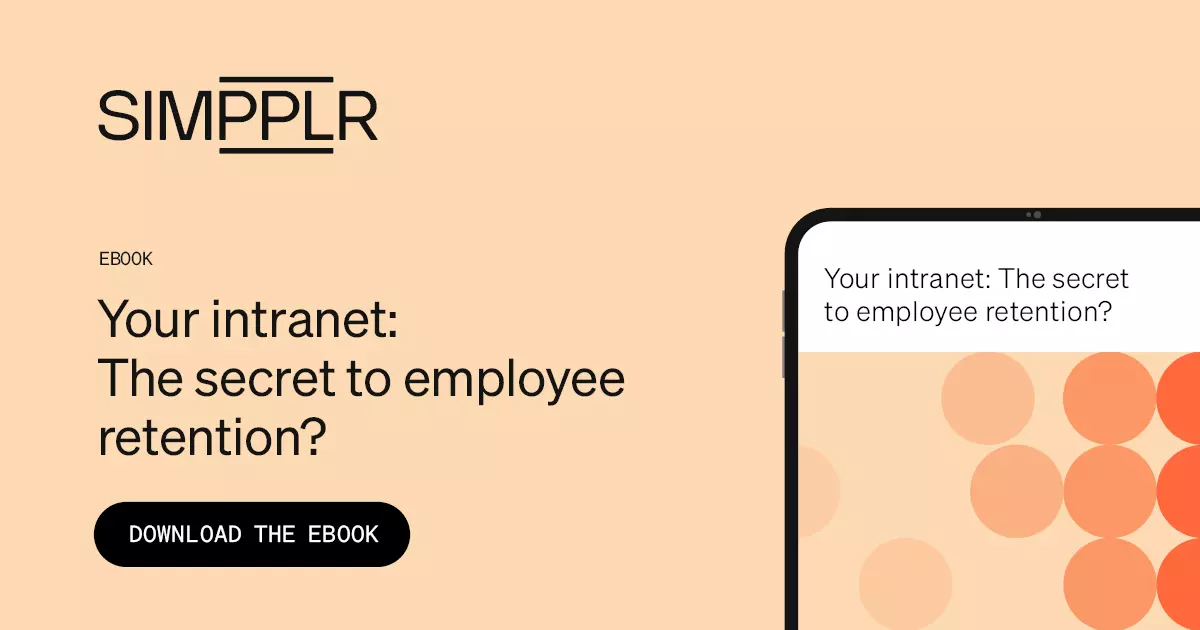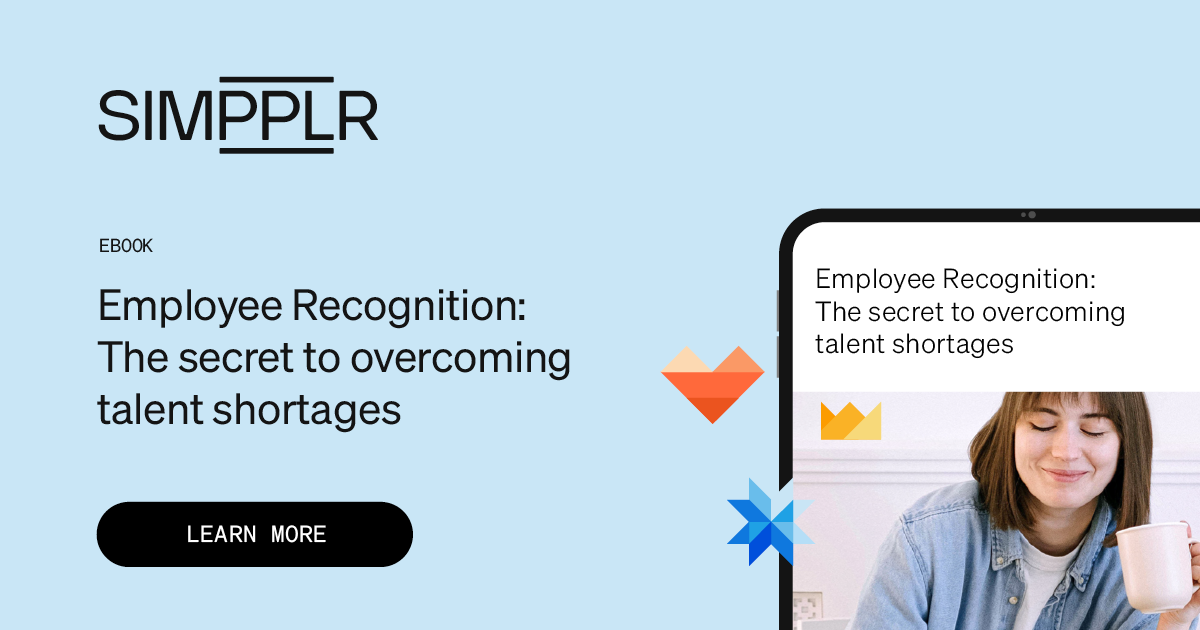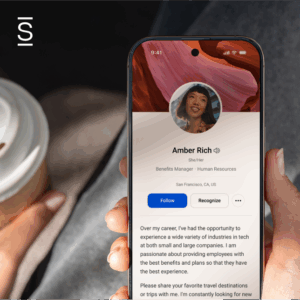There’s no question that we’re living in turbulent times, and executing innovative employee retention strategies has become crucial as workers are leaving their jobs for new ones in droves. In January 2020, just before the pandemic hit, the World Economic Forum predicted that rapid technological changes would transform nearly half of all core skill sets within two years. But two years later, it turned out that the technological shift wasn’t the cause of the so-called “Great Resignation,” but mindset and attitudes about work.
After working remotely for extended periods of time, employees re-evaluated what they used to consider a “normal” employee experience and found it lacking. People worldwide realized that “respectful treatment of all employees at all levels” was their genuine desire, moreso even than compensation, according to SHRM. And where employees are headed are companies that have an intentional employee experience strategy (EX). In addition, the SHRM report on employee retention found that workers now value personal fulfillment— trust, employment security, and the chance to stretch their skills and abilities on the job—closely after pay. Technology wasn’t even on the horizon.
Bottom line? Four of the five leading factors in employee retention come down to employee experience.
Companies with the best employee retention strategies attract and keep workers
NEI Investments is a case in point. This socially responsible investment fund has been recognized as a Great Place to Work in Canada for many years. Still, an increasingly remote workforce was taking its toll on the company culture. The sheer volume of emails was becoming overwhelming, and distributed employees didn’t feel connected to the company’s mission and values and felt even less connected. Successful employee retention examples often involve innovative approaches to maintain a strong connection with remote teams.
Fortunately, NEI has an EX strategy that includes an annual employee satisfaction survey that brought these issues to light. To help its workers reconnect and stay involved, NEI needed a creative way to retain employees. The company restored its sense of community by implementing Simpplr’s modern intranet platform. Having a centralized hub to get answers, talk with each other, and collaborate in real-time dramatically increased employee engagement at the firm and reinforced NEI’s commitment to company culture and communication. New survey scores showed that employees now feel more connected to the business than ever.

Without a dedicated employee retention strategy and commitment to employee experience, companies can miss the tell-tale signs of burnout caused by rapidly changing work environments and the shift to remote work. That burnout leads to high employee turnover rates as team members start scanning the web for new opportunities — with better work arrangements, a more tightly knit workplace culture, and a more promising career path for remote employees.
Employees are quitting: look at the leaders
Our Glassdoor research on communication and employee retention suggests that employees are most likely to leave a company when they feel a lack of leadership, particularly regarding employee well-being. More intriguing are engagement surveys that reveal low marks for the company’s CEO. A lack of trust in the big boss is a strong predictor of poor employee experience and high turnover within the next 12 months.
To turn that situation around, employee retention strategies need to reflect a solid commitment to your employee experience strategy, including these fundamental factors:
Employee retention strategies you can implement
Start with your hiring process
Look for ways to entice candidates with your company’s mission and workplace culture. A good hiring process reflects the nature of the company, and, according to Forbes, millennials and GenZ make career choices based on how well their values align with the company.
If a candidate realizes that the issues that matter to them are also important to their prospective company, that candidate already feels an affinity for the culture and get excited about a new job before they even receive an offer. When new employees feel their companies reflect their values—often concerning employee experience issues like flexibility, balance, and well-being—they’ll feel strongly committed to your culture from the moment they walk in the door.
Ensure your compensation strategies to retain employees are competitive
You don’t need to offer the highest salary in the industry to attract top talent. Millennials, particularly after experiencing remote work during the pandemic, care about things like work-life balance, flexible schedules, and parental leave at least as much, if not more, than compensation. Just make sure you express a clear commitment to employee well-being as an impetus for the benefits package, and that you base your salary structure on principles of fairness and equity.
For raises, there are salary increases to consider, Indeed recommends being transparent about your budget and offering whatever increases you can afford as rewards for accomplishments, loyalty, or exceptional performance rather than waiting for employment anniversaries.
Work hard to make a good first impression, say companies with the best employee retention programs
Forbes suggests that a good way to reduce employee turnover starts with company culture and assuring a good fit from day one. Implementing an effective employee retention program can begin by pairing new employees with their hiring manager for the comfort of a familiar face and provide an easy, organized onboarding system to make them feel welcome.
Make a human resources staff member available to help new hires access their perks, walk them through healthcare benefits, and set expectations for a healthy work-life balance.
And, of course, show off your onboarding experience using your smart, modern intranet. That integrated onboarding experience will be both impressive and help new hires get acclimated faster. Envision new hire onboarding workflows straight from the intranet with Simpplr’s Summer 22 release, Ida.
Invest in employees’ personal and professional growth journey
Gallup reports that the number one reason people move on from an employer is a lack of upward career mobility. Employees want professional development opportunities, and nothing says how much you believe in your workers, like investing in their growth and providing a chance to stay motivated and move up.
Millennials and Gen Z’s who have never known a world without the internet have a great hunger to upskill, partly because of their upbringing alongside rapidly changing technology. Likewise, seasoned employees crave ongoing learning and development and appreciate the lessons their younger colleagues can teach. Creating a mentorship program that brings together managers and employees for learning opportunities makes employees feel valued and connected to your organization.
Recognize employees for work well done
The importance of positive feedback and employee recognition may seem intuitively obvious, especially to HR teams, but only one in three U.S. workers agreed that they had received recognition for good work in the past seven days. To do their best, all employees need positive reinforcement and examples to look to for inspiration.

Recognition programs don’t cost very much, if anything at all, but they can yield high rewards. Whether it’s a simple birthday celebration or a monetary bonus for a job well done, recognition should be personal and genuine. If you offer regular performance reviews, use the time to point out each employee’s successes and to thank them for their contributions.
Employees are your best asset. Take good care of them
Don’t overlook the importance and value of wellness programs. Employees work hard, long hours, sometimes under stressful conditions, and companies that fail to recognize that are often the first ones to lose their workers. An unsung hero of successful employee engagement, wellness programs like gym memberships, supplemental healthcare subscriptions, access to stress reduction techniques like chair massage and yoga classes show employees you care about keeping them well. In fact, a wellness program that’s tightly aligned with company values, broadly accessible, and highly relevant can have ROIs as high as six to one, according to a Harvard Business Review study.
Keep in mind that relevant wellness perks are different from what they used to be: Millennials and Gen Z place a higher premium on nutrition and mental health than their predecessors did, though those aspects of wellness are growing in popularity among more experienced workers. When employees see their values reflected in the company culture, their engagement with the company naturally increases and they will stay for the long term.
Conduct exit interviews
Every employee has a lifecycle with the company, and while it’s sad to see them go, we hope they’ll be happy in their new role, whatever it may be. Still, companies need to understand why an employee has chosen to leave, where they’re going, and get parting thoughts–this can be done with exit program. Saying goodbye with an exit interview helps employees leave with a positive impression of the company and the employee experience they had with the company. Even if an employee’s exit has nothing to do with the company specifically (say a marriage or a move), exit interviews can improve an employee’s view of the company and the work they did there. Employees with a positive exit experience are 32% more likely to say they are proud of their work and 2.9 times more likely to recommend their organization to others.
The exit experience is the last time that this person will be a part of the company, and they will carry that final impression with them. If you can make them feel heard and appreciated, they are far more likely to speak well of your organization in the future.
Turn the Great Resignation into the Great Employee Retention
With an effective employee experience strategy, you can approach even today’s strange, unpredictable job market with confidence. Lower attrition means money saved, not only by reducing normal turnover costs like recruiting and onboarding but by retaining the consistency of experienced hands.
Successful EX strategies help you keep your best employees and improve company culture to the point of lowering turnover and raising employee engagement. Start by investing in Simpplr’s AI-driven intranet software, with all the tools, analytics, and integrations you need to implement your EX strategies for higher employee retention and a positive ROI.
Turn the Great Resignation into your own Great Employee Retention after reading our free eBook: 3 Approaches for Strengthening Employee Experience.
















